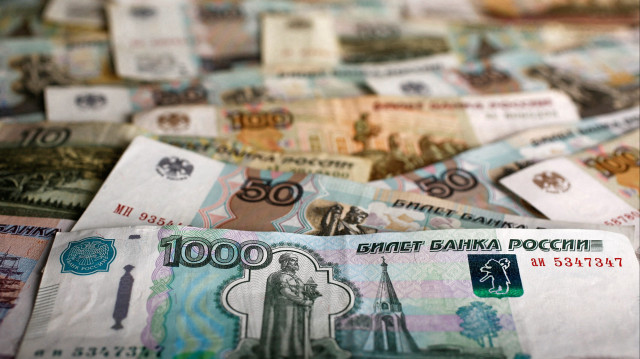
Moscow’s de-dollarization efforts yield fruits as ruble’s share in country’s foreign trade reaches 50.7% in May
Russia’s efforts to de-dollarize its foreign trade accelerated, as the share of the Russian ruble in the country’s foreign trade with Asian countries reached 50.7% in May, going over the 50% threshold for the first time, while the demand for the euro and the US dollar declined.
The ruble’s share increased 2 percentage points month-on-month in May, while the share of the ruble in exports to Europe fell 2.3 percentage points to 59.8% and its share in trade with Africa by 14.3 percentage points to 84.6%, according to the Russian Central Bank.
Meanwhile, the share of the ruble in Russia’s trade with North and South America increased 2.3 percentage points to 51.9%, and with Oceania, 3.1 percentage points to 94.2%, the data showed.
Experts say that Russia gained an edge by reducing additional costs like currency conversion and commissions that were previously imposed due to the low share of the ruble in its foreign trade, but the currency’s low convertibility and high volatility cause issues for importers—buyers seeking to avoid currency risks tie prices to more stable currencies like the Chinese yuan to minimize potential losses.
Russia’s de-dollarization trend gained momentum, especially after the Russia-Ukraine war broke out in February 2022, as Russia sought to reduce the share of the US dollar in its trade due to sanctions.
Officials from the BRICS (Brazil, Russia, India, China, and South Africa) bloc said before that a common currency is not on the agenda, as the organization is focused on boosting the share of each country’s national currencies in mutual trade and moving away from the US dollar.
US President Donald Trump said on July 8 that the BRICS bloc was “set up to degenerate” the US dollar and “take the dollar off as a standard.”
“What they’re trying to do is destroy the dollar so that another country can take over and be the standard, and we’re not going to lose the standard—if you have a smart president, you will never lose the standard,” he said.
- Trump’s protectionist policies
Analysts say that sanctions and Trump’s protectionist policies—especially tariffs—shook the US dollar’s global confidence and led to increased demand for alternative assets, such as gold, the euro, and the Chinese yuan.
The yuan’s popularity rose rapidly in Russia as Western countries froze Russia’s reserves and restricted dollar and euro transactions, but the rise in demand for the Chinese yuan slowed down as new banking sanctions were imposed by the US last year.
The Russian Central Bank stopped sharing data on the use of the Chinese yuan in the Russian banking system, while the Moscow Stock Exchange also no longer publishes volume data on the yuan, the largest foreign currency traded on the platform.
Foreign exchange transactions on the Moscow Stock Exchange fell to the lowest levels in two years in May and remained low in June, according to a report by Russian daily Kommersant.
Meanwhile, the Russian ruble not only became the main currency in the country’s foreign trade but also gained the most against the US dollar this year, rising 30% since the beginning of the year.
The US dollar/Russian ruble exchange rate rose from 75 to 120 since the war in Ukraine broke out, and it is trading at 80 as of July 28.
Exporters, especially in the Russian private sector, say that a level of 100 in the exchange rate would be fairer for the ruble, while the Russian Central Bank says the current rate helps inflation.







